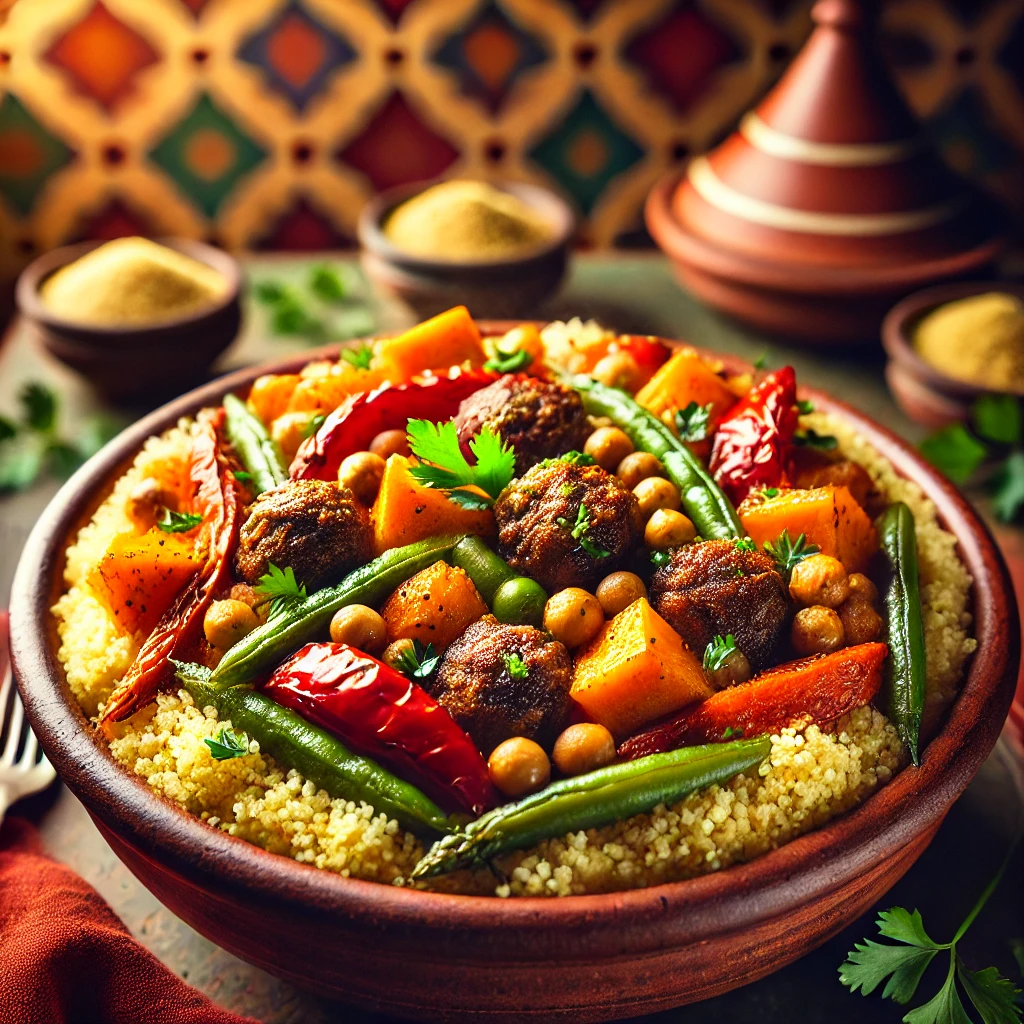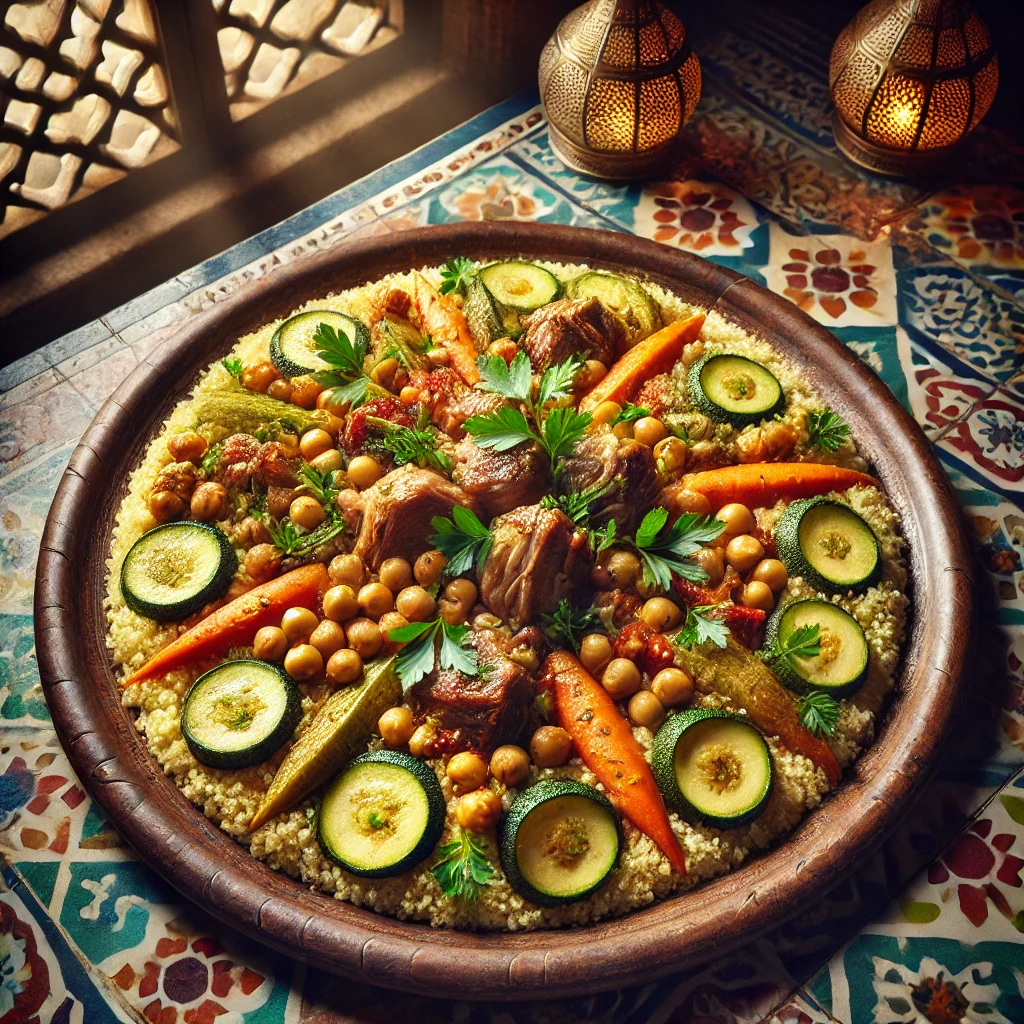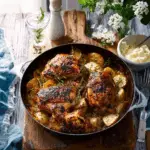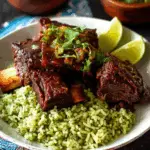Moroccan cuisine is a feast for the senses, with its vibrant colors, rich aromas, and exotic flavors that tell the story of a land steeped in history and tradition. Among the myriad of dishes that Morocco is famous for, one stands out as a symbol of its culinary heritage: Couscous. This simple yet versatile dish has transcended borders, becoming a beloved staple in kitchens worldwide. In this blog post, we will delve into the history, cultural significance, and the intricate process of preparing Moroccan Couscous. By the end, you’ll have a comprehensive understanding of this iconic dish and be inspired to create it in your own kitchen.
The History and Cultural Significance of Moroccan Couscous
Couscous is more than just a dish in Morocco; it is a cultural institution, deeply embedded in the fabric of Moroccan life. The origins of couscous are somewhat shrouded in mystery, but it is believed to date back to the Berber tribes of North Africa, who first began cultivating and using durum wheat, the primary ingredient in couscous, around the 9th century. The name “couscous” is derived from the Berber word “seksu,” which means “well rolled” or “well formed,” referring to the tiny granules of semolina that make up the dish.
Over the centuries, couscous became a staple food for the Berber people and spread throughout North Africa, eventually becoming synonymous with Moroccan cuisine. It is traditionally served on Fridays, the Muslim holy day, as a symbol of community and hospitality. In Moroccan culture, couscous is often prepared for special occasions such as weddings, religious festivals, and family gatherings. It is a dish that brings people together, and its preparation is often a communal activity, with family members and friends gathering in the kitchen to help.
Ingredients and Preparation of Moroccan Couscous
At its core, Moroccan couscous is a simple dish made from semolina wheat, water, and salt. However, the magic of couscous lies in its versatility and the endless possibilities for customization. The dish can be served as a side or a main course, and it can be paired with a variety of ingredients, including vegetables, meats, and aromatic spices.
Ingredients:
- Couscous:
- 2 cups of couscous (semolina)
- 2 cups of water
- 1 tablespoon of olive oil
- A pinch of salt
- Vegetables:
- 2 carrots, peeled and cut into chunks
- 2 zucchinis, cut into chunks
- 1 large potato, peeled and cut into chunks
- 1 large onion, chopped
- 1 can of chickpeas, drained and rinsed
- 2 tomatoes, chopped
- 1 cup of pumpkin, cut into chunks
- Meat (optional):
- 1 pound of lamb, beef, or chicken, cut into chunks
- Spices:
- 1 teaspoon of ground cumin
- 1 teaspoon of ground coriander
- 1 teaspoon of ground cinnamon
- 1 teaspoon of turmeric
- 1 teaspoon of paprika
- Salt and pepper to taste
- A pinch of saffron threads (optional)
- Broth:
- 4 cups of vegetable or chicken broth
- 2 tablespoons of tomato paste
- Garnishes:
- A handful of raisins (optional)
- A handful of toasted almonds (optional)
- Fresh cilantro or parsley, chopped
Preparation:
- Steaming the Couscous:
- Begin by preparing the couscous. In a large bowl, place the couscous and drizzle with a tablespoon of olive oil and a pinch of salt. Using your hands, rub the couscous grains together to coat them evenly with oil.
- Boil 2 cups of water and pour it over the couscous, ensuring all the grains are covered. Cover the bowl with a lid or plastic wrap and let it sit for about 5 minutes until the water is absorbed.
- Fluff the couscous with a fork to separate the grains and set aside.
- Preparing the Vegetables and Meat:
- In a large pot or couscoussier (a traditional Moroccan steamer), heat some olive oil over medium heat. Add the chopped onion and sauté until it becomes translucent.
- If using meat, add it to the pot and brown it on all sides. Season with salt, pepper, cumin, coriander, cinnamon, turmeric, paprika, and saffron if using.
- Add the chopped tomatoes and tomato paste to the pot, stirring to combine with the spices. Cook for a few minutes until the tomatoes begin to break down and form a sauce.
- Add the carrots, potatoes, pumpkin, and chickpeas to the pot. Pour in the broth, ensuring the vegetables are covered. Bring to a boil, then reduce the heat and let it simmer for about 30 minutes until the vegetables are tender.
- If using zucchini, add it in the last 10 minutes of cooking to prevent it from becoming too soft.
- Steaming the Couscous (Second Round):
- While the vegetables and meat are cooking, place the couscous in the top part of the couscoussier (or in a steaming basket if you don’t have one). Place it over the pot with the simmering stew, cover, and steam for about 10 minutes.
- Remove the couscous and fluff it again with a fork. You can add a small knob of butter or a drizzle of olive oil at this stage for extra flavor and moisture.
- Final Assembly:
- To serve, mound the couscous on a large platter, creating a well in the center. Ladle the meat and vegetables into the well, and pour some of the broth over the couscous to moisten it.
- Garnish with raisins, toasted almonds, and fresh herbs if desired. Serve the remaining broth on the side for guests to add as they wish.
Variations of Moroccan Couscous
One of the beauties of couscous is its adaptability. While the recipe above is a traditional version, there are countless variations that reflect the diverse regions and culinary traditions of Morocco. Here are a few popular variations:
- Seven Vegetable Couscous:
- This version is often made on Fridays and includes a variety of vegetables, typically seven, which is a number with spiritual significance in Islam. Common vegetables used include carrots, zucchini, pumpkin, turnips, and cabbage.
- Sweet Couscous (Couscous Seffa):
- A unique version of couscous that is sweet rather than savory. It is typically served as a dessert or for special occasions. The couscous is steamed and then mixed with butter, sugar, ground almonds, and cinnamon. It is often garnished with powdered sugar and raisins.
- Couscous with Dried Fruits:
- This variation includes dried fruits such as apricots, dates, and raisins, which are cooked with the vegetables and meat, adding a sweet and tangy flavor to the dish.
- Seafood Couscous:
- A coastal variation that features a variety of seafood, such as shrimp, squid, and fish, cooked with a tomato-based sauce and served over couscous.
Tips for Perfect Couscous
- Quality of Ingredients:
- The key to a delicious couscous lies in the quality of the ingredients. Use fresh, seasonal vegetables and good-quality semolina couscous.
- Fluffing the Couscous:
- To achieve light and fluffy couscous, be sure to fluff the grains with a fork after steaming. This separates the grains and prevents them from clumping together.
- Spices:
- Don’t be afraid to experiment with spices. Moroccan cuisine is known for its bold and aromatic spices, so feel free to adjust the quantities to suit your taste.
- Patience:
- Preparing couscous is a labor of love. Take your time with each step, especially when steaming the couscous, to ensure the best results.
Conclusion
Moroccan couscous is more than just a meal; it is a culinary journey that takes you through the rich history, culture, and flavors of Morocco. Whether you’re preparing it for a special occasion or a simple family dinner, couscous has the ability to bring people together around the table. Its versatility allows you to tailor it to your preferences, making it a dish that everyone can enjoy. So, why not try your hand at making Moroccan couscous and experience a taste of Morocco in your own home?







